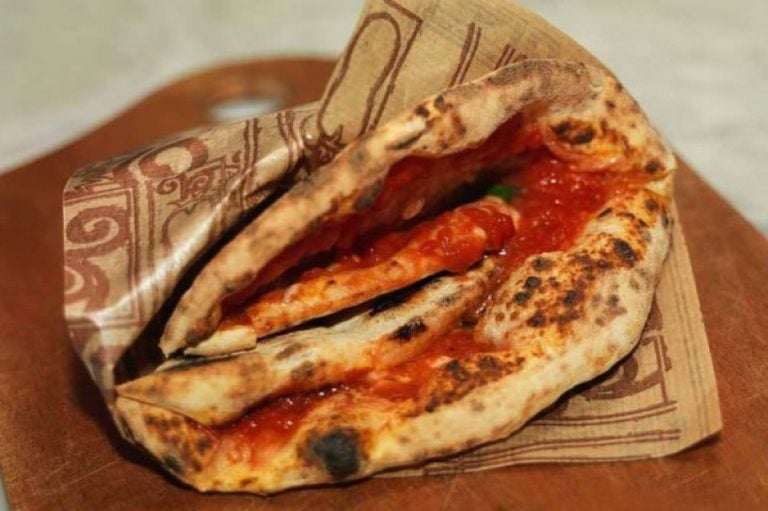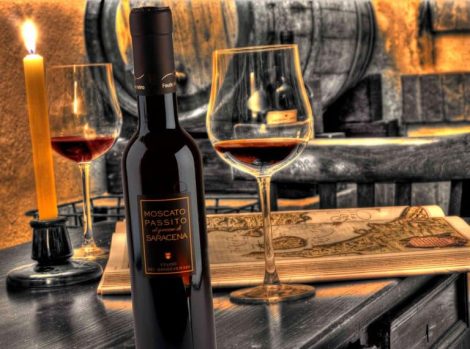What is Italian piza a portafoglio
Pizza a portafoglio has its roots in the Neapolitan culinary tradition and is the oldest example of pizza in street food version. The pizza a portafoglio, smaller in size than the plated pie, takes its name from the fact that it is folded over itself (just like a portafoglio = wallet) to make it easier to bite into it even while walking. Today, it has become iconic street food and can be bought for a handful of euros in many pizzerias but also bakeries, pastry shops and rotisseries. A food that enjoyed a moment of high media coverage in 1994, when Bill Clinton was photographed in the crowd of an ancient pizzeria enjoying a pizza a portafoglio.
Who invented pizza a portafoglio?
Matilde Serao, Neapolitan writer and journalist (six times candidate for the Nobel Prize for literature) in her work Il ventre di Napoli, explores the origins of pizza a portafoglio and finds confirmation back to 1738 by Antica Pizzeria Port'Alba, one of the first pizzerias in Naples, founded by the D'Ambrosio family, still in business even if over the years the place has evolved. Originally the pizzeria had only one oven and a marble countertop, and the pizzas were kept warm in stoves. Pizza a portafoglio (aka “pizza a libretto”) was born as a peasant meal. While traditional pizza is the people's dish par excellence – since it represents an abundant and complete meal accessible to all – pizza a portafoglio is even more the street food of the people, which not only manages to satisfy the desire of the moment, but it does so for pennies.
How to properly eat pizza a portafoglio
It must be said that the history of pizza a portafoglio is a natural evolution of the classic Neapolitan pizza. The latter is unique in its kind and is characterised by its softness, which lends itself perfectly to being folded. The pizza a portafoglio is served fresh from the oven, left open on a sheet of baking paper or parchment paper, and only in some cases is it served already folded. Fun, enjoyable and functional, the pizza a portafoglio was born to be eaten in an instant. For this reason, it is often not topped like traditional pizza, but with less topping to deal with the tomato spill when folding it. What if we want to replicate pizza a portafoglio (also) at home? The recipes are certainly not secret, but the true critical point is baking it: the ideal would be to have a modern domestic oven that reaches the necessary temperature of 500 degrees Centigrade, to obtain optimal baking, but with a good dough and a certain skill, one can aspire to something very similar, even with conventional electric ovens. It goes without saying that being in the streets of Naples and eating a pizza a portafoglio while walking has a completely different flavour, it is like savouring the city's true essence.


 Neapolitan or Bolognese? The (tomato-free) history of the two ragùs that divide Italy
Neapolitan or Bolognese? The (tomato-free) history of the two ragùs that divide Italy Dom Perignon for dogs and sleepless rock stars: the bizarre requests to the world’s best hotel manager
Dom Perignon for dogs and sleepless rock stars: the bizarre requests to the world’s best hotel manager The oil always moves north, reaching England. How the map of olive trees is changing due to climate change
The oil always moves north, reaching England. How the map of olive trees is changing due to climate change The Nobel Sandwich we tried at CERN, just steps from antimatter
The Nobel Sandwich we tried at CERN, just steps from antimatter The two young talents from Gattinara revolutionising Italian cuisine
The two young talents from Gattinara revolutionising Italian cuisine






